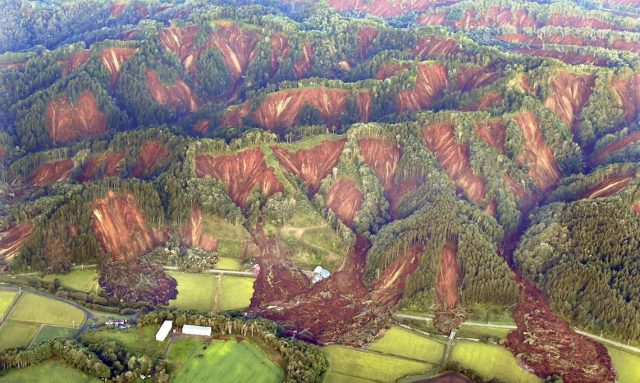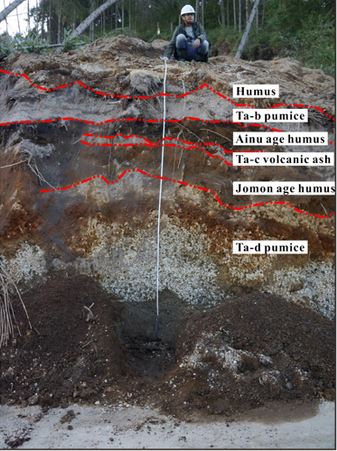29 January 2020
The role of weak pumice layers in landslides triggered by the M=6.7 6 September 2018 Hokkaido Iburi-Tobu Earthquake
Posted by Dave Petley
The role of weak pumice layers in landslides triggered by the M=6.7 6 September 2018 Hokkaido Iburi-Tobu Earthquake
On 6 September 2018 the M=6.7 Hokkaido Iburi-Tobu earthquake triggered large numbers of landslides in Japan. A subsequent analysis (Yamagishi and Yamazaki 2018) suggested indicated that over 6,000 landslides were triggered, resulting in 36 fatalities. They suggested that the exceptionally high landslide initiation rate probably resulted from high susceptibility of the local geology to earthquake shaking.

The area of intense landslides from the 06/09/2018 Hokkaido Iburi-Tobu earthquake. Image via Tokyo Keizai.
In a new study, Li et al. (2020) have examined the role of weak pumice layers in the triggering of these landslides. The landslides occurred in an area of pyroclastic deposits from the various volcanoes located in the vicinity. Field mapping suggests that there is a particularly weak pumice layer, the so-called Ta-d strata, which dates from an eruption of Tarumae volcano about 8,700 to 10,000 years ago. The image below, from Li et al. (2020), shows the complex layering in these landslides, including the Ta-d pumice low down in the section.

A vertical section through one of the landslide scarps from the M=6.7 6 September 2018 Hokkaido Iburi-Tobu Earthquake. Image from Li et al. (2020).
.
Li et al. (2020) consistently found that the Ta-d pumice layer acting at the sliding layer in the landslides triggered by this earthquake. They have undertaken a series of laboratory analyses of this material, finding that it is extremely susceptible to liquefaction. They have concluded that a lower permeability palaeosol under the pumice layer enabled seepage parallel to the slope, which may have weakened this layer over time. When subjected to ground accelerations in excess of about 5 m/s2 the pumice layer underwent liquefaction, reducing shear strength to close to zero, allowing the slopes to fail.
This paper provides an elegant explanation for the extensive landsliding that occurred in the M=6.7 Hokkaido Iburi-Tobu earthquake. As we found in our work in New Zealand (Massey et al. 2013), thin layers of weak volcanic materials can often control the susceptibility of slopes to failure. This is probably the most extreme version of this effect that I have seen to date.
References
Li, R., Wang, F. & Zhang, S. 2020. Controlling role of Ta-d pumice on the coseismic landslides triggered by 2018 Hokkaido Eastern Iburi Earthquake. Landslides https://doi.org/10.1007/s10346-020-01349-y
Massey, C.I., Petley, David and McSaveney, M.J. (2013) Patterns of movement in reactivated landslides. Engineering Geology, 159, 1-19.
Yamagishi, H. & Yamazaki, F. 2018. Landslides by the 2018 Hokkaido Iburi-Tobu Earthquake on September 6. Landslides. https://doi.org/10.1007/s10346-018-1092-z.


 Dave Petley is the Vice-Chancellor of the University of Hull in the United Kingdom. His blog provides commentary and analysis of landslide events occurring worldwide, including the landslides themselves, latest research, and conferences and meetings.
Dave Petley is the Vice-Chancellor of the University of Hull in the United Kingdom. His blog provides commentary and analysis of landslide events occurring worldwide, including the landslides themselves, latest research, and conferences and meetings.